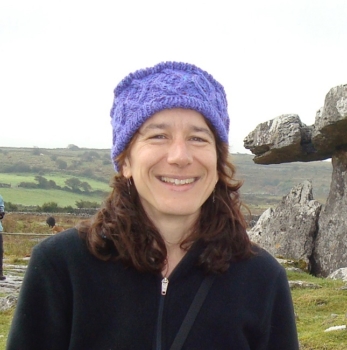Human health and wellbeing Research Theme
Exploring, understanding, and determining those aspects of nature which directly contribute to improvements in physical and mental health and wellbeing.

About
Nature recovery is embedded in a wider socio-economic context which includes both its direct and often beneficial impacts on both physical and mental human wellbeing. In this theme we examine which specific aspects of nature recovery are needed in order to maximize the benefits that nature can provide to human health and wellbeing.
A rapidly growing literature shows that physical and mental health is greatly improved by access to green space. However, a significant knowledge gap remains: which aspects of nature are responsible for the association between green space and health? To what extent is it a combination of vegetation shapes, colours, sounds such as elevated songbird and reduced traffic noise, density of biomass, or even the smell emitted by different plant volatile organic compounds? A plethora of studies have been published in the past decade on these various aspects of nature that all trigger physiological and psychological responses when we interact with them but usually these are studies carried out in a clinical setting with a small number of participants. This new theme aims to move these experiments into real-life situations with randomised control trials (RCTs) to tease apart which aspects of nature align most closely with aspects of enhanced physical and mental human well-being. Specifically, a new set of new methodological approaches are being developed that links ecology and neurosciences and NGOs working in this space across Oxford, to understand the exact mechanisms involved, providing novel and quantitative understanding of exactly what types of natural landscape provide most benefits to mental health and well-being.
In addition to field experiment experiments and clinical trials we will be using new big-data approaches that harvest social media to provide novel understanding of how people interact with and benefit from nature. In this theme we aim to develop novel and quantified estimates of the health and wellbeing aspects of nature and use this information to design nature recovery strategies that also maximise its health benefits.
Theme lead
Projects
-
An investigation into the impact of different measures of vegetation cover and characteristics in urban areas on mental health in Birmingham
This was a desk-based project using the exceptional tree-data and greenspace data sets from Birmingham City along with the Small Area Mental Health Index to determine which aspect of nature are associated with the most positive mental health outcomes.
Team
- View project
Theme outputs
- Awards
- Human health and wellbeing
- Social cultural dimensions
- Ecology
- Awards
- Human health and wellbeing
- Social cultural dimensions
- Ecology
Oxfordshire’s greenspace-deprived neighbourhoods
Coordinating author: Martha Crockatt
This report explores Natural England’s Green Infrastructure data to identify neighbourhoods in Oxfordshire experiencing both socio-economic deprivation and poor provision of accessible greenspace, with a view to these neighbourhoods being prioritised in terms of planning, allocation of funding, and effort for improving quality and quantity of accessible greenspace.
Contributors: Matt Witney (Oxfordshire Local Nature Partnership), Alison Smith (University of Oxford), Rosie Rowe (Oxfordshire County Council), Mark Hirons (University of Oxford), Constance McDermott (University of Oxford), Camilla Burrow (Wild Oxfordshire) and Joseph Gent (University of Oxford).
Oxfordshire’s greenspace-deprived neighbourhoods
A new report which has just been launched explores Natural England’s Green Infrastructure data to identify neighbourhoods in Oxfordshire experiencing both socio-economic deprivation and poor provision of accessible greenspace, with a view to these neighbourhoods being prioritised in terms of planning, allocation of funding, and effort for improving quality and quantity of accessible greenspace.
News & events
-

Oxfordshire’s Greenspace Deprived Neighbourhoods
28 May 2024Martha Crockatt I’m writing this in mid-April; although there has been wind, rain and even hail in the last few days, hawthorn, tulips and forget-me-nots are blooming, bees are starting to buzz and the sun, when it does come out from behind a cloud, is warm – it’s a lovely time to be outdoors in […]
news Blog -

Oxfordshire’s green space-deprived neighbourhoods
17 April 2024A report, released today by the researchers in the Leverhulme Centre for Nature Recovery, identifies neighbourhoods in Oxfordshire experiencing both socio-economic deprivation and poor provision of accessible green spaces, with a view to these neighbourhoods being prioritised in terms of planning, allocation of funding, and effort for improving quality and quantity of accessible green spaces. […]
news Report













